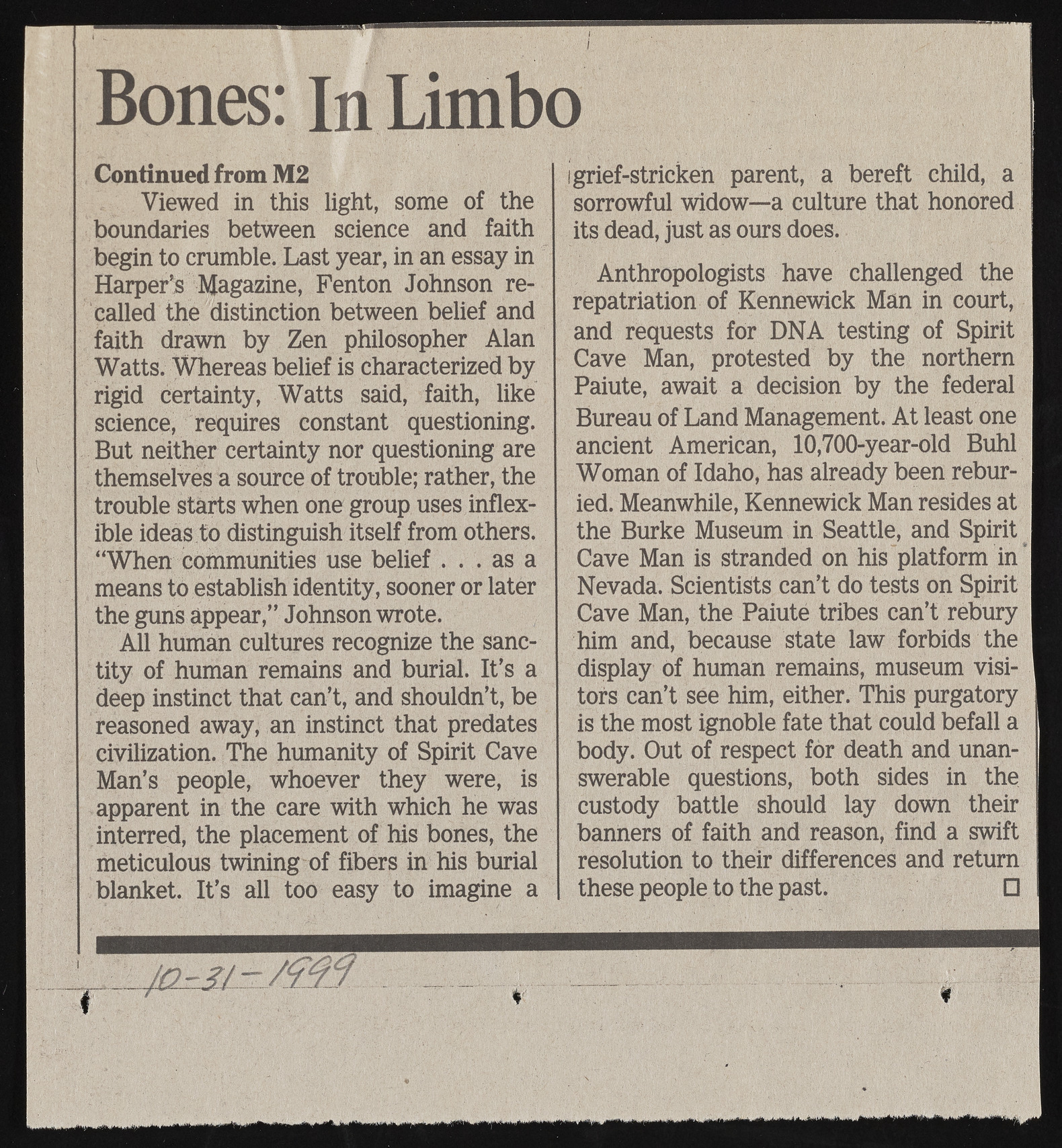Copyright & Fair-use Agreement
UNLV Special Collections provides copies of materials to facilitate private study, scholarship, or research. Material not in the public domain may be used according to fair use of copyrighted materials as defined by copyright law. Please cite us.
Please note that UNLV may not own the copyright to these materials and cannot provide permission to publish or distribute materials when UNLV is not the copyright holder. The user is solely responsible for determining the copyright status of materials and obtaining permission to use material from the copyright holder and for determining whether any permissions relating to any other rights are necessary for the intended use, and for obtaining all required permissions beyond that allowed by fair use.
Read more about our reproduction and use policy.
I agree.Information
Digital ID
Permalink
Details
More Info
Rights
Digital Provenance
Publisher
Transcription
Bones: In Limbo Continued from M2 Viewed in this light, some of the boundaries between science and faith begin to crumble. Last year, in an essay in Harper’s Magazine, Fenton Johnson recalled the distinction between belief and faith drawn by Zen philosopher Alan Watts. Whereas belief is characterized by rigid certainty, W atts said, faith, like science, requires constant questioning. But neither certainty nor questioning are themselves a source of trouble; rather, the trouble starts when one group uses inflexible ideas to distinguish itself from others. “When communities use belief . . . as a means to establish identity , sooner or later the guns appear,” Johnson wrote. All human cultures recognize the sanctity of human remains and burial. It’s a deep instinct that can’t, and shouldn’t, be reasoned away, an instinct that predates civilization. The humanity of Spirit Cave Man’s people, whoever they were, is apparent in the care with which he was interred, the placement of his bones, the meticulous twining of fibers in his burial blanket. It’s all too easy to imagine a igrief-stricken parent, a bereft child, a sorrowful widow—a culture that honored its dead, just as ours does. Anthropologists have challenged the repatriation of Kennewick Man in court, and requests for DNA testing of Spirit Cave Man, protested by the northern Paiute, await a decision by the federal Bureau of Land Management. At least one ancient American, 10,700-year-old Buhl Woman of Idaho, has already been reburied. Meanwhile, Kennewick Man resides at the Burke Museum in Seattle, and Spirit Cave Man is stranded on his platform in ’ Nevada. Scientists can’t do tests on Spirit Cave Man, the Paiute tribes can’t rebury him and, because state law forbids the display of human remains, museum visitors can’t see him, either. This purgatory is the most ignoble fate that could befall a body. Out of respect for death and unanswerable questions, both sides in the custody battle should lay down their banners of faith and reason, find a swift resolution to their differences and return these people to the past. ? 3 1

